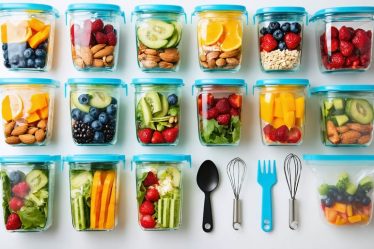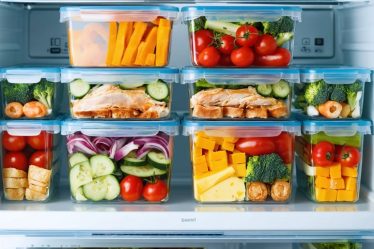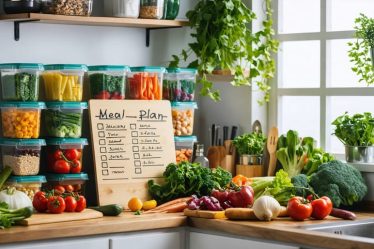
Pack nutrient-dense snacks like mixed nuts, dried fruits, and protein bars in clear, portion-controlled containers for easy access during travel. Transform your hotel room into a healthy eating haven by selecting accommodations with mini-fridges and implementing smart meal prep strategies before departure. Master the art of portable, TSA-friendly meals by preparing mason jar salads, overnight oats, and wrap sandwiches that stay fresh for up to 48 hours.
I’ve discovered through countless trips that thoughtful meal preparation isn’t just about saving money – it’s about maintaining energy levels and feeling your best while exploring new destinations. Whether you’re embarking on a weekend getaway or planning an extended adventure, strategic food planning eliminates the stress of finding healthy options in unfamiliar places. By investing just two hours before your trip to prep balanced, travel-friendly meals, you’ll create a foundation for nourishing yourself while staying true to your wellness goals on the road.
Planning Your Travel-Friendly Menu
Food Safety and Storage Guidelines
When it comes to keeping your travel-prepped meals safe and fresh, a few smart strategies can make all the difference. Start by choosing ingredients that naturally hold up well at room temperature – think whole fruits, nuts, hard cheeses, and dried goods. I learned this the hard way after a questionable yogurt incident during a road trip!
Always pack perishable items in an insulated container with ice packs, and try to consume these within 4 hours if they can’t be refrigerated. When preparing meals ahead, cool everything completely before packing to prevent condensation, which can lead to faster spoilage.
For maximum freshness, layer your ingredients strategically – keep wet ingredients separate from dry ones, and use air-tight containers to prevent leaks. A handy tip I swear by: pack dressings and sauces in separate small containers and add them just before eating.
Temperature control is crucial – the “danger zone” for food is between 40°F and 140°F (4°C-60°C), where bacteria multiply rapidly. If you’re traveling with perishables, consider investing in a good-quality travel cooler or insulated lunch bag. Remember, when in doubt about food safety, it’s better to play it safe!
TSA-Friendly Food Options
Navigating TSA regulations with homemade meals doesn’t have to be stressful! I learned this the hard way after having my carefully packed lunch confiscated at security. Now, I always follow these simple guidelines to ensure my travel meals breeze through checkpoints.
Remember the 3-1-1 rule applies to spreads and dressings too. Pack dips, hummus, and salad dressings in 3.4-ounce (100ml) containers or less. Solid foods like sandwiches, wraps, cut vegetables, and dried fruits are generally allowed through security without restrictions. Just make sure they’re properly wrapped or stored in clear containers for easy inspection.
Pack your food in clear, plastic containers that security can easily examine. Avoid metal containers or anything that might look suspicious on the X-ray machine. If you’re bringing utensils, stick to plastic ones – metal utensils might get flagged.
Pro tip: Pack an empty water bottle and fill it after security. While liquids are restricted, you can bring frozen items through TSA checkpoints. Consider freezing grapes or berries – they’ll keep other foods cool and provide a refreshing snack once thawed.
Keep everything organized in a dedicated meal bag or container that’s easy to remove from your carry-on during screening. This simple preparation will help you sail through security while keeping your healthy eating habits on track.
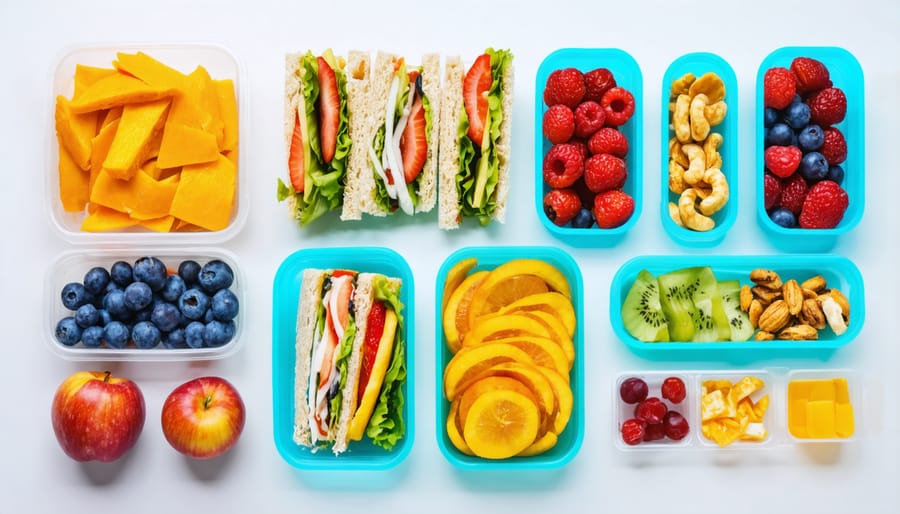
Essential Travel Food Containers and Tools
When it comes to successful travel meal prep, having the right essential food storage containers and tools can make all the difference. I learned this the hard way during a cross-country road trip when my soup leaked all over my carry-on! Now, I swear by leak-proof, compartmentalized containers with secure snap-locking lids. Look for BPA-free options that are both microwave and dishwasher safe for maximum convenience.
A set of collapsible silicone containers has been a game-changer for me – they take up minimal space when empty and are perfect for both hot and cold foods. I also recommend investing in a few stainless steel containers with different compartments, ideal for keeping your proteins, grains, and vegetables separate and fresh.
Don’t forget these essential tools that’ll make your travel dining experience much smoother:
– Reusable cutlery set (including a knife, fork, spoon, and chopsticks)
– Insulated food jar for hot meals or soups
– Small ice pack for keeping perishables fresh
– Cloth napkins or paper towels
– Zip-top bags for snacks and dry goods
– Portable cutting board
– Multi-purpose bottle opener
Pro tip: Label your containers with masking tape and a marker to keep track of what’s inside and when you packed it. This simple step has saved me from the “is this still good?” guessing game more times than I can count!
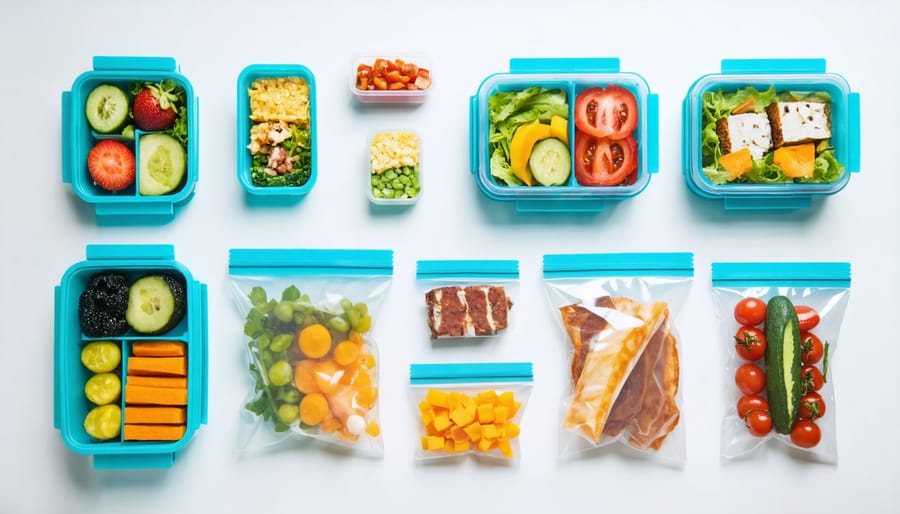
Easy Make-Ahead Travel Meals
No-Refrigeration Required Options
Let me share one of my favorite travel hacks: no-refrigeration meals are absolute lifesavers when you’re on the go! I discovered their magic during a cross-country road trip, and they’ve been my go-to ever since.
Start with whole grain wraps or sturdy bread filled with nut butter and banana or honey – these hold up beautifully for hours. Trail mix is another winner; I like mixing almonds, dried cranberries, and dark chocolate pieces for a perfect blend of sweet and satisfying. Hard-boiled eggs (if eaten within 2-4 hours) are protein powerhouses that travel well.
For something more substantial, try grain-based salads with quinoa or couscous, mixed with shelf-stable ingredients like sun-dried tomatoes, olives, and nuts. Individual packets of tuna or chicken with whole-grain crackers make excellent protein-rich options. Don’t forget about fresh fruits with tough skins like apples, oranges, and bananas – nature’s perfect travel snacks!
Some of my other trusted options include:
– Granola bars or protein bars
– Whole grain pretzels with individual nut butter packets
– Dried fruit and jerky
– Roasted chickpeas
– Rice cakes with single-serve almond butter
Remember to pack these items in crush-proof containers and keep them away from direct sunlight. These options aren’t just convenient – they’re delicious ways to stay nourished while exploring!

Cold Storage Travel Meals
When I’m traveling, my cooler bag is like my portable kitchen! I’ve found that with a bit of planning, you can pack delicious, fresh meals that stay perfectly chilled for your journey. The key is choosing ingredients that hold up well in cold storage while still delivering on taste and nutrition.
For breakfast options, overnight oats are a game-changer. Mix rolled oats with your favorite milk, add some chia seeds, and top with berries and honey. They’ll stay fresh for up to three days when properly chilled. Greek yogurt parfaits layered with granola and fruit are another fantastic option that travels beautifully.
Lunch and dinner selections can include protein-packed quinoa bowls with chickpeas, cherry tomatoes, and feta cheese. I love preparing mason jar salads – the trick is layering with dressing at the bottom, hearty vegetables in the middle, and delicate greens on top. Turkey and hummus roll-ups are perfect for snacking throughout the day.
Don’t forget about refreshing sides like cucumber and grape tomato salad or marinated chickpea salad – both stay crisp and tasty in cold storage. For protein, hard-boiled eggs and pre-cooked chicken breast strips are reliable options that keep well.
Remember to pack your cooler bag with ice packs and keep it out of direct sunlight. When staying at hotels, request a mini-fridge in advance to ensure your prepped meals stay fresh throughout your stay.
Hotel Room-Friendly Snacks
Let’s talk about making your hotel room a snack-friendly zone without breaking the bank or compromising on healthy choices! During my recent business trip to Chicago, I discovered some genius ways to keep hunger at bay between meetings.
Start by packing lightweight, non-perishable items that won’t get crushed in your luggage. Individual portions of nuts, dried fruit, and granola are perfect travel companions. I love creating my own trail mix with almonds, dried cranberries, and dark chocolate chips – it’s both satisfying and energizing!
For protein-rich options, consider single-serve nut butter packets, beef jerky, or protein bars. If your room has a mini-fridge, you can stock up on fresh fruit, yogurt cups, and string cheese from a local grocery store. Don’t forget to pack some zip-top bags – they’re perfect for portioning out snacks for day trips.
Some hotel-room hacks I swear by: use the ice bucket to keep perishables cold if you don’t have a fridge, and bring a few paper plates and plastic utensils. For breakfast, instant oatmeal packets can be prepared using hot water from the coffee maker, and you can top them with nuts and dried fruit from your trail mix.
Remember to pack a reusable water bottle – staying hydrated is just as important as having healthy snacks on hand! With these simple preparations, you’ll save money and maintain your healthy eating habits, even when you’re miles from home.
Mindful Eating Tips While Traveling
Balancing Prep and Local Experiences
Traveling is all about finding the perfect balance between convenience and adventure, especially when it comes to food. While meal prep can save you money and keep you energized, you don’t want to miss out on the local culinary experiences that make travel so special. The key is to practice mindful eating practices while strategically planning your meals.
Consider prepping breakfast and snacks for most days, leaving lunch and dinner open for local exploration. This way, you start your day with familiar, nutritious food while having the freedom to discover local cafes and restaurants later. Pack portable basics like overnight oats, trail mix, or energy balls for breakfast and snacks, then dedicate specific days to trying local specialties.
I learned this lesson during my trip to Thailand – having healthy snacks on hand meant I could enjoy street food adventures without feeling overwhelmed or overindulging. It also helped me stay within budget by not having to eat out for every single meal.
Create a flexible schedule: perhaps prep meals for three days of your week-long trip, leaving the other days open for culinary exploration. This approach helps you maintain healthy habits while still immersing yourself in the local food culture. Remember, travel is about experiencing new things, and food is a beautiful part of that journey.
Staying Hydrated and Energized
Staying energized during travel starts with smart hydration and nutrition choices. I learned this lesson the hard way during a cross-country road trip when I relied too heavily on coffee and sugary snacks – let’s just say the energy crashes weren’t fun! Now, I always pack a reusable water bottle and set reminders on my phone to drink regularly throughout the day.
To maintain steady energy levels, focus on balanced snacks that combine protein, healthy fats, and complex carbohydrates. Trail mix with nuts, dried fruits, and dark chocolate pieces is my go-to travel companion. For hydration beyond plain water, try infusing your bottle with cucumber slices, mint leaves, or citrus fruits – it’s refreshing and helps you drink more throughout the day.
When it comes to maintaining healthy eating habits while traveling, timing is everything. Try to eat small, frequent meals rather than large ones that can make you feel sluggish. Pack electrolyte packets or coconut water for long travel days, especially if you’re flying or visiting warm destinations.
Remember to keep some emergency energy boosters in your bag – things like banana chips, whole grain crackers, or chia seed pouches can be lifesavers when you’re between destinations or stuck in transit delays. The key is finding the right balance between staying energized and not weighing yourself down with too many snacks.
With these travel meal prep strategies in your arsenal, you’re well-equipped to maintain healthy eating habits while exploring the world. Remember, preparation doesn’t mean sacrificing spontaneity – it simply means taking care of yourself while embracing new adventures. Start small by implementing one or two of these ideas on your next trip, and gradually build your travel meal prep routine. Not only will you save money and feel better, but you’ll also have more time and energy to focus on what truly matters – creating memorable experiences. Whether you’re planning a weekend getaway or an extended vacation, these meal prep techniques can help you stay nourished and energized throughout your journey. So pack those containers, grab your favorite healthy snacks, and get ready to explore the world with confidence and good nutrition by your side!

